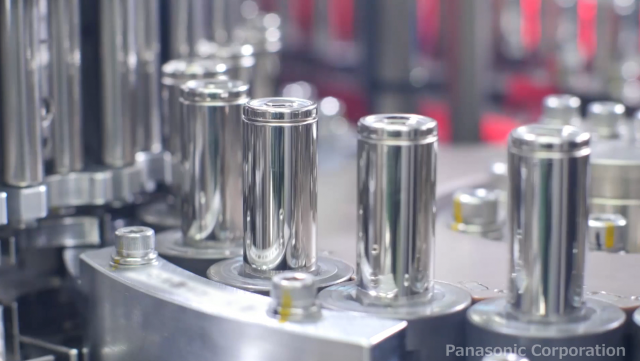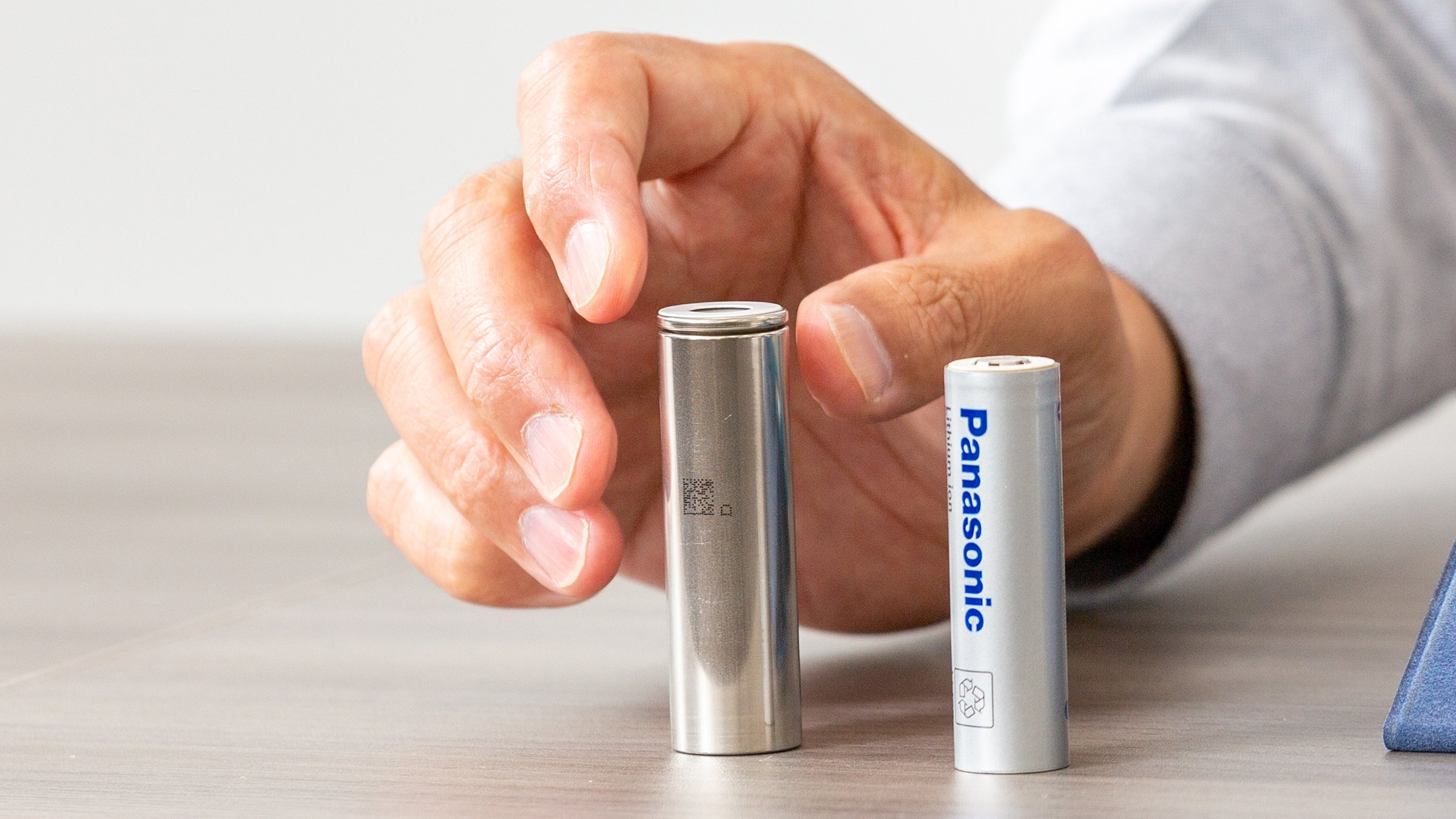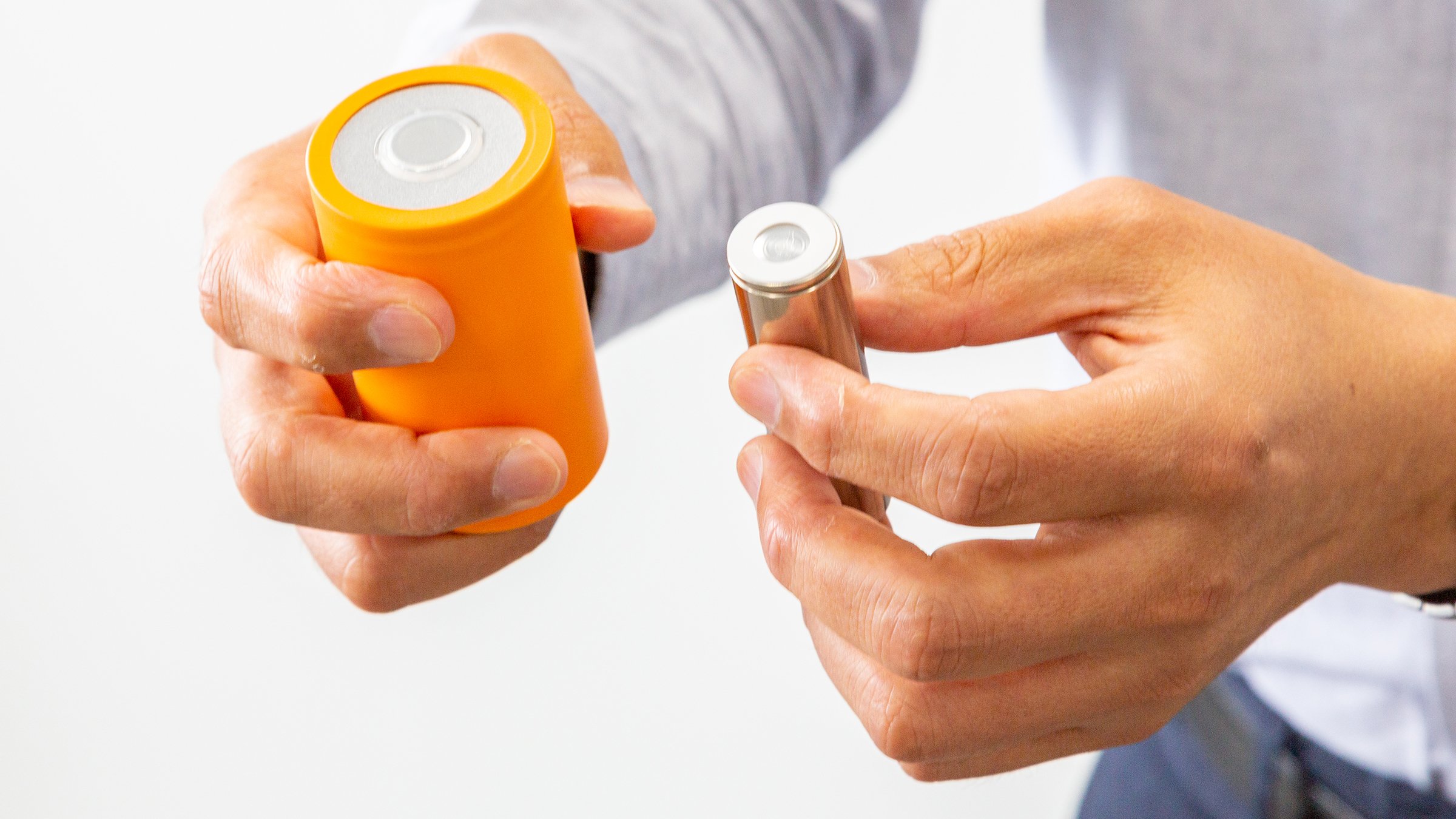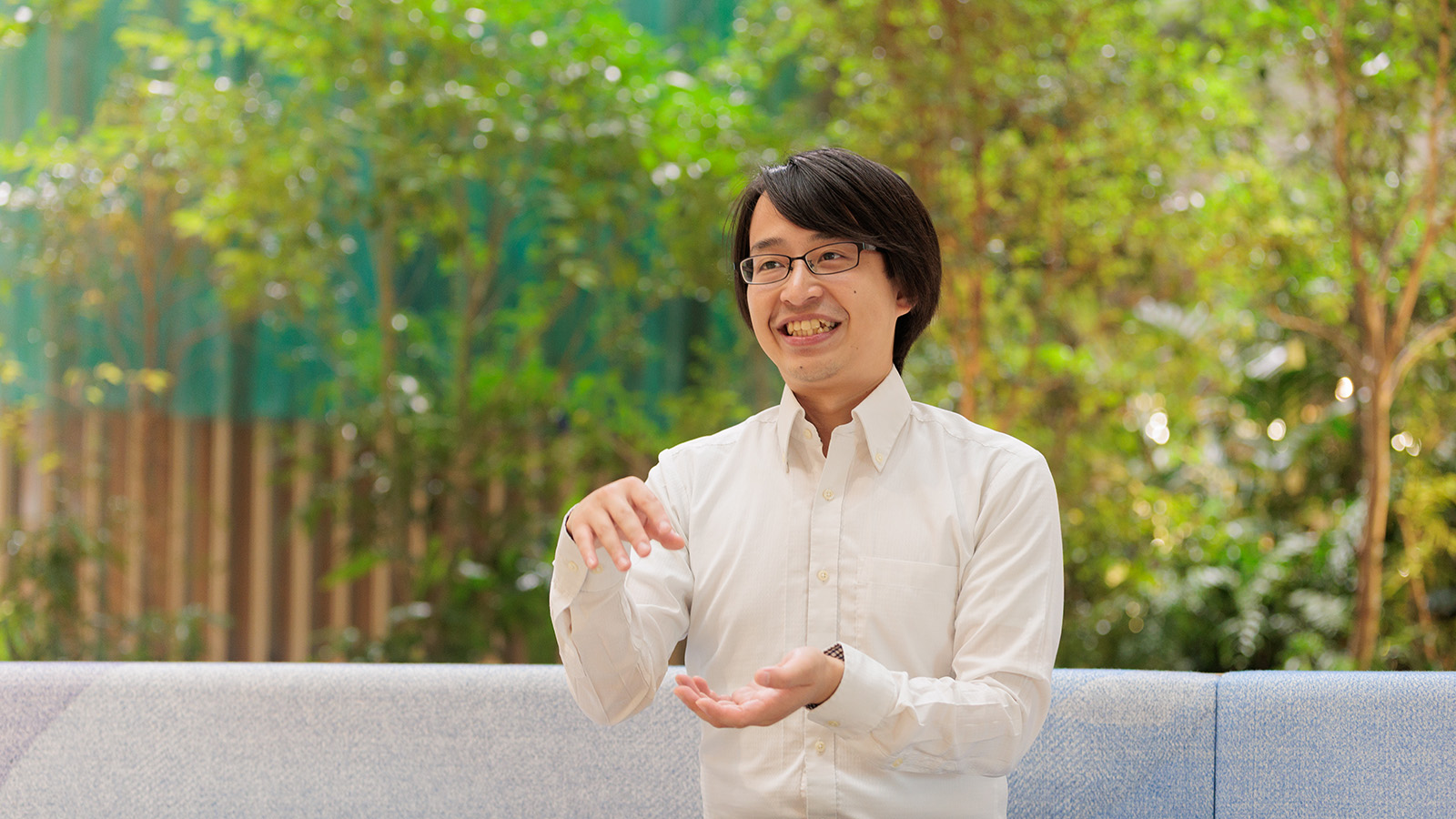
Electric vehicles (EVs) have a growing presence all over the world. Helping to power the ever-increasing number of EVs on the roads is Panasonic's cylindrical automotive battery business. A pioneer in the automotive battery segment, Panasonic has been leading the industry through constant refinement--and now this profit center is on the cusp of yet another evolution.
Seizing Challenges to Create New Value
Panasonic's cylindrical lithium-ion batteries were originally designed to deliver outstanding longevity and light weight to notebook PCs, but the emergence of demand for automotive use batteries in the late 2000s led to the development of Panasonic's automotive battery business. Although the performance requirements for this new application was a challenge, the company drew on decades of experience producing various types of batteries, and in 2017, Panasonic commissioned a manufacturing plant for cylindrical automotive batteries in North America. Dedicated to producing automotive batteries on an unprecedented scale, the facility was developed with an eye on positioning Panasonic to play an active role in a future where EVs have become ubiquitous against the backdrop of a global commitment to addressing environmental issues.
Mr. Watanabe, currently in charge of Energy Technology and Manufacturing, led the launch of Panasonic Energy North America as President.
Shawn Watanabe, Head of Energy Technology and Manufacturing, spearheaded the launch of the North America plant. "We set up the North America operation by drawing on the know-how we've gained from lithium-ion battery production in Japan--know-how that has allowed us to build a plant that is five times the size and three times the speed of conventional facilities. Due to the nature of the product, we had to meet extremely high standards for safety and quality, and with a new workforce in a location with a different culture and language while also being agile and precise. We couldn't compromise on any of these points if our goal was uninterrupted production of high-precision batteries."
"Taking up the challenge, we communicated with each other, localized the meticulous manufacturing system used in Japan and made further improvements based on local needs. Collectively, we have forged a strong relationship of trust with our US colleagues, and the results speak for themselves."
Leader in High Energy Density and Environmental Performance
Panasonic is currently working on two types of cylindrical automotive batteries: the 1865 and 2170. The first two digits indicate diameter (18mm/21mm) and the second two indicate height (65mm/70mm). The latest models boast the world's highest level of energy density.
One key to achieving high energy density is improving the chemical composition of the active materials (the materials that store electricity) in the cathode and anode so that more electricity can be stored. Another is increasing the amount of active material within the limited space of each battery. In both areas, Panasonic has leveraged on technological know-how to achieve the highest level of performance.
Today's batteries need more than just performance to be competitive--they also need to be sustainable. Panasonic has succeeded in drastically reducing the amount of cobalt in its lithium-ion batteries. Explains Watanabe: "We started researching lithium-ion batteries in the 1980s, and since then have been keenly aware of the need to address the issue of rare metals. Our goal from day one was to minimize the amount of cobalt used for automotive batteries."
Cobalt, which has an ability to stabilize crystal structures, is an important material for achieving thermal stability. The type of cathode active material used by Panasonic--NCA*--requires less cobalt than the alternative--known as NCM**. Panasonic has progressively reduced the amount of cobalt in each battery to less than 5% through the use of alternative elements and surface treatment. Through a strategic partnership with Redwood Materials, a North American battery recycling operation, Panasonic is actively working to advance sustainability in the supply chain which will allow it to reuse cobalt and other materials. With the aim of realizing environmentally-friendly lithium extraction and production methods, Panasonic has also begun collaborating with an energy company for the validation and optimization of sustainable processes based on its industry knowledge. Panasonic's newest batteries, which combine higher energy density with reduced cobalt usage, were introduced in all lines in FY2020.
*NCA: Cathode material for lithium-ion batteries based on lithium nickelate (nickel/cobalt/aluminum)
**NCM: Cathode material for lithium-ion batteries based on a ternary system (nickel/cobalt/manganese)
Core 'Strengths' Driving Next Evolution
From left: the 1865, 2170 and a mock-up of the next generation of large cylindrical automotive batteries.
Capacity is the next stage in the evolution of the automotive battery. Panasonic is moving ahead with development of a next-generation large cylindrical automotive battery, which has a cylinder diameter more than twice the current size, and the first step will be to set up a test line in Japan to verify safety and performance. The market is eagerly awaiting the larger battery for two reasons: greater capacity means fewer batteries are needed to achieve the same level of performance; greater capacity also reduces the number of mounts on the vehicle body, reducing the number of weld points and contributing to better overall cost.
But capacity has its own challenges, including new designs and a higher level of safety assurance. With comprehensive quality control governing each process and manufacturing technology capable of producing larger electrodes, Panasonic has the accumulated know-how to deliver both capacity and safety.
The evolution of Panasonic's automotive batteries is driven by the pursuit of "optimal value" for the customer. Increased capacity is one such example. Panasonic's true strength is its ability to accommodate the needs of user scenarios, such as long-distance driving and city driving, by leveraging its advantages in energy density and environmental performance.
The difference in cylinder diameter between a mock-up of the next generation large cylindrical automotive battery (left) and the current model (2170). Panasonic is about to achieve a significant increase in battery capacity.
Panasonic is committed to addressing and resolving global environmental challenges, and the automotive battery business has an important role to play in promoting sustainable mobility. Said Watanabe: "The electrification of vehicles is an effective means for promoting the diversification of mobility power sources. We will continue to take on the challenge of providing solutions to global environmental problems through the evolution of our technology."
As part of the transition to a holding company structure in April 2022, there will be the creation of a new energy business company, Panasonic Energy Corporation, which will play a key role in achieving the Group-wide goals of becoming carbon-neutral and generating more energy than is consumed. As the world moves toward decarbonization, the automotive battery business is steadily increasing its presence--in Japan, the United States and Europe. Further innovation will accelerate the evolution of the automotive battery as an essential tool for reducing the burden on the global environment while promoting the ubiquity of EVs.
###
Disclaimer:
We would like to note that Panasonic Newsroom is not a place to address personal Customer Service issues. Even though this is not the forum, Panasonic is always eager to resolve your concerns. Our local customer services contacts can be found at Global Support or you can see our list of Social Media Accounts to find the right channel for your queries and concerns.
Related Links
Related Videos
Evolution of Battery Technology and Manufacturing at Panasonic










